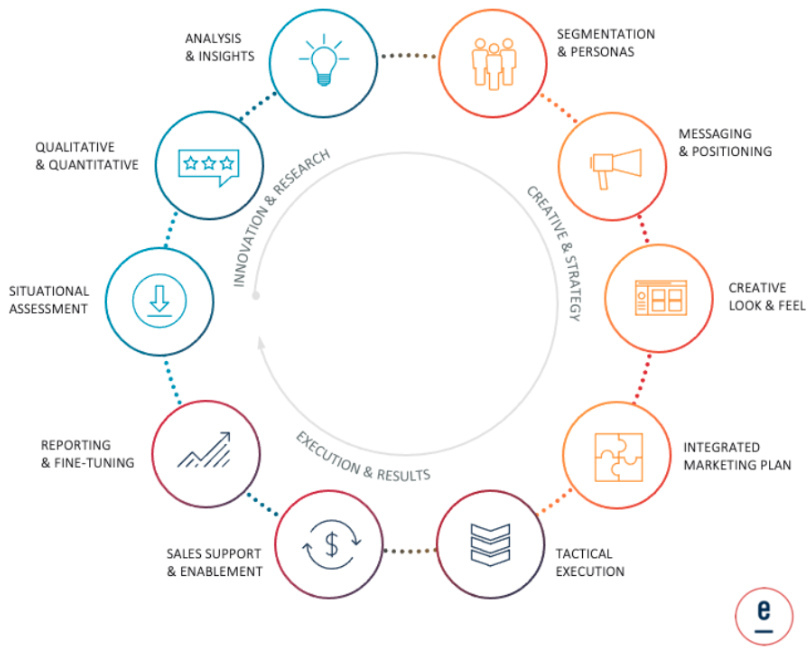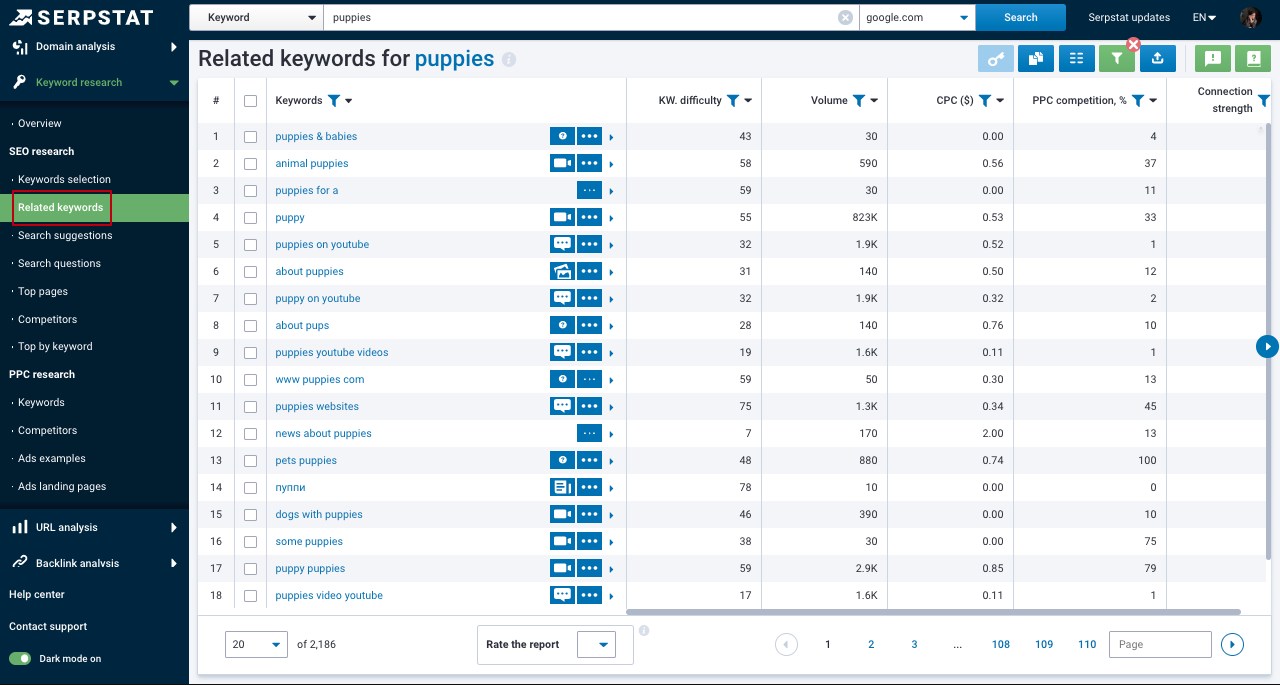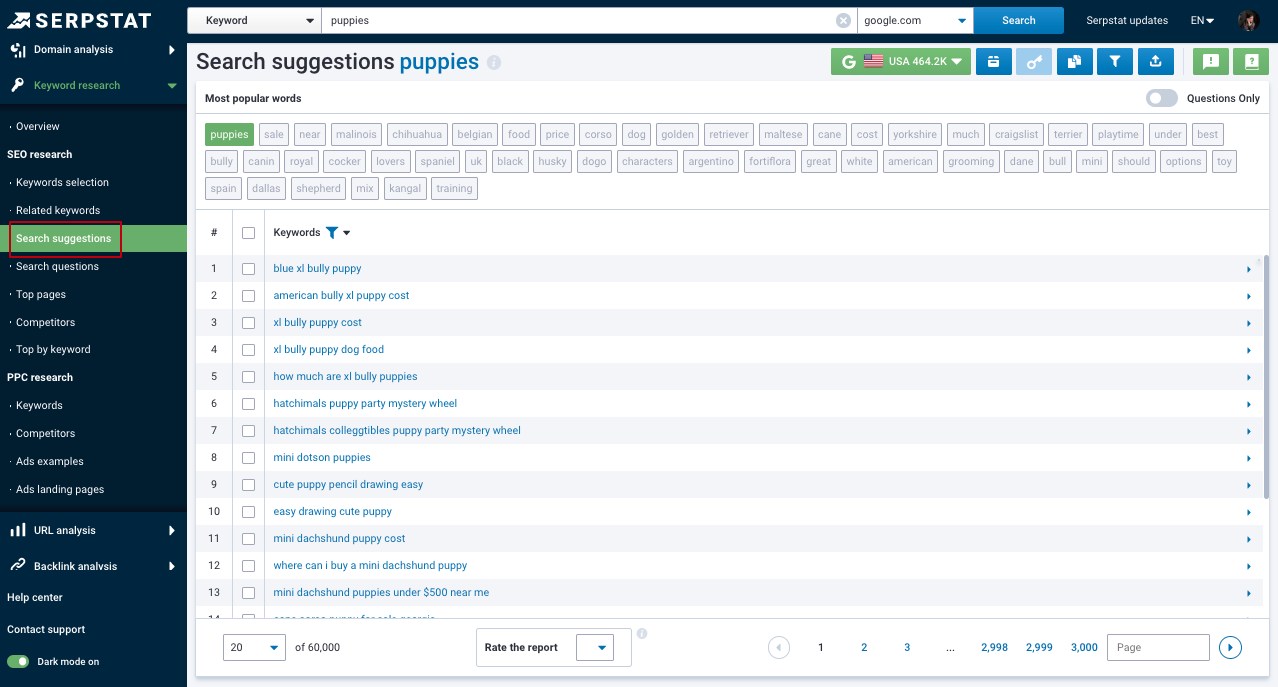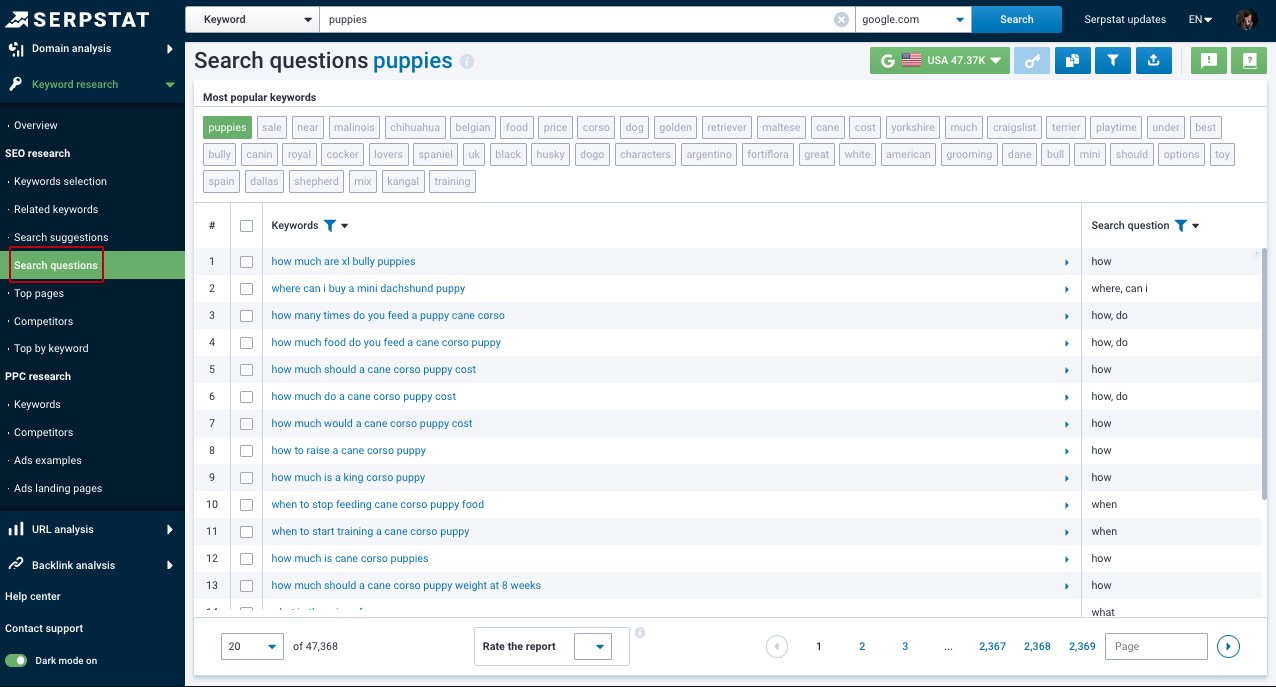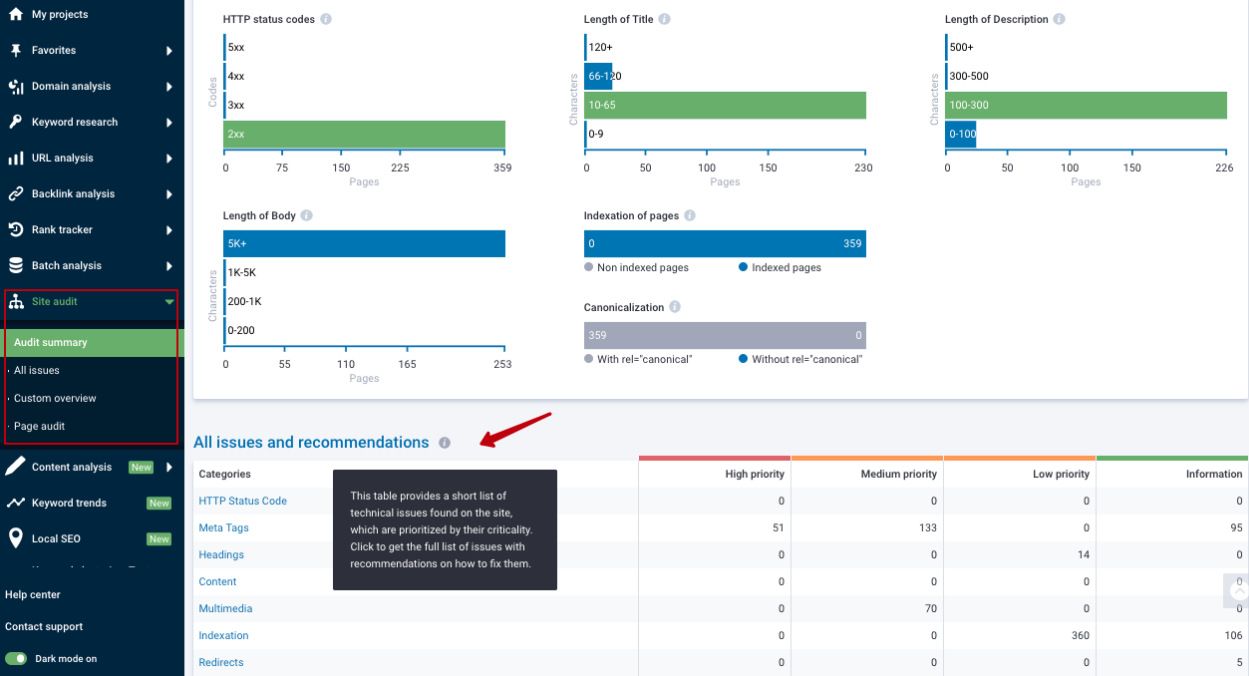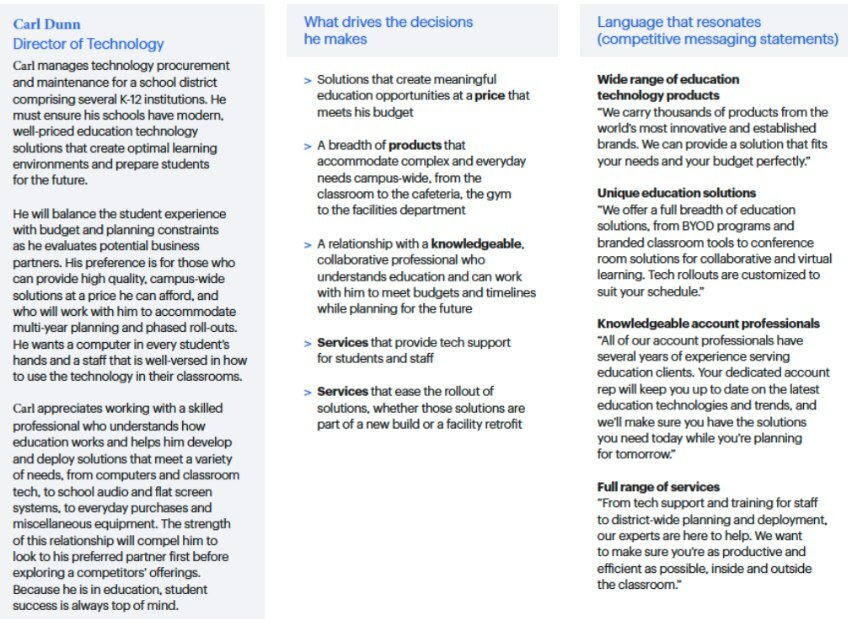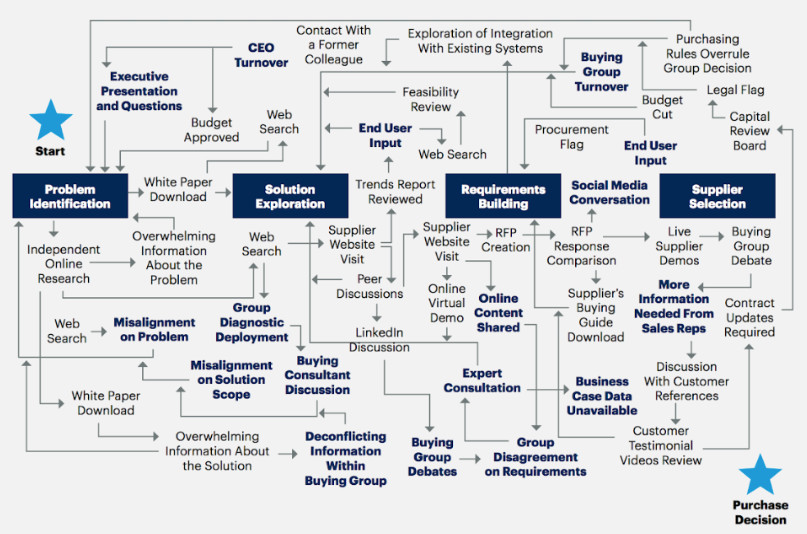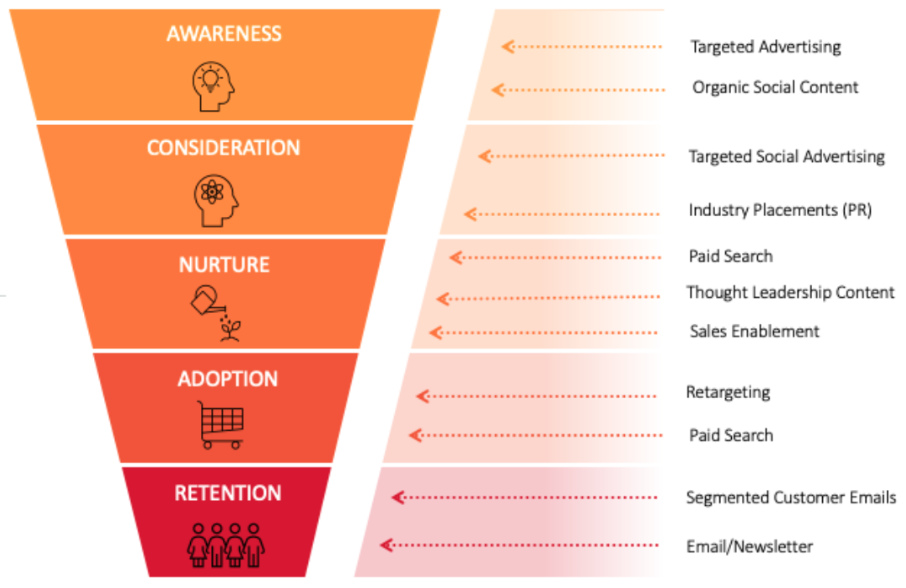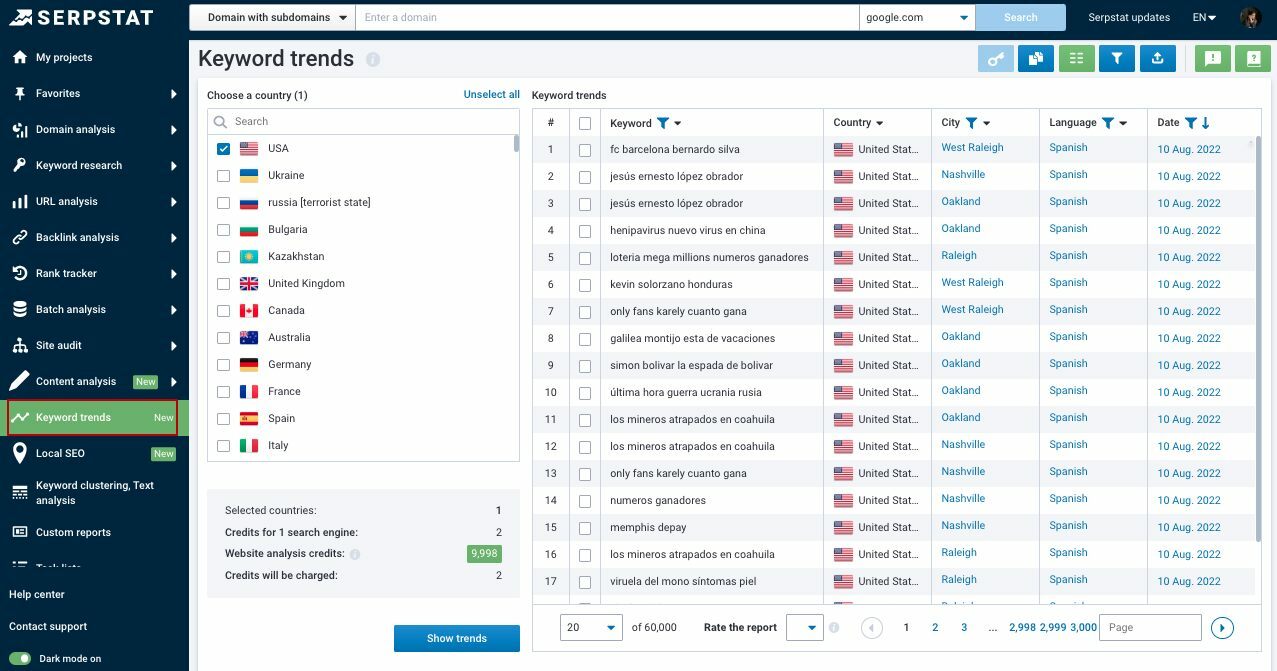Start Exploring Keyword Ideas
Use Serpstat to find the best keywords for your website
Integrated Marketing: How to Increase B2B Website Traffic

Keyword optimization, SEO, social presence, site speed and accessibility, thought leadership — each of these tactics is vital to increasing your website traffic. But the key to your success is understanding how these efforts tie into one another across the buyer’s journey. With a little strategic coordination, you can maximize their impact.
You see, if your online marketing, your print marketing, and your sales efforts are siloed — if they’re not working together — none of them is optimized. You must use an integrated marketing strategy to gain total value from your sales and marketing efforts.
In this article, we explore how to increase the quality and quantity of your website traffic using Integrated Marketing.
- What is integrated marketing?
- What is the purpose of integrated marketing?
- A Data-Driven Approach to Integrated Marketing
2. Perform Research and Audits
3. Understand Your Audience
4. Develop Consistent Messaging and Branding
5. Build Brand Awareness
6. Capture Interest
7. Retarget and Nurture
8. Close the Deal
9. Practice Post-Purchase Nurturing
Recap
Understand Integrated Marketing
What is integrated marketing?
Think of your sales and marketing efforts as parts of a car. While each part is vital to the car's operation, they must work together, or it's not going anywhere. Similarly, no single sales and marketing strategy is the sole contributor to your business's success. You can't build a car, or a solid marketing approach, by stacking the parts separately.
Every team is working toward your business objectives, but how united are their efforts? To be truly effective, they must be connected and cooperative. By integrating your sales and marketing strategies, you build a high-performing machine.
What is the purpose of integrated marketing?
This means you'll increase brand awareness in your target audience, capture interest with ads and provide nurturing content that pushes prospects through the sales funnel — and it doesn't end there. You'll also create sales enablement materials to move sales qualified leads (SQLs) through the pipeline and support clients post-purchase to encourage brand loyalty, referrals, and repeat sales.
When you coordinate these efforts, you supercharge your overall sales and marketing strategy. Together, these efforts drive more traffic to your website and, ultimately, increase your sales.
A Data-Driven Approach to Integrated Marketing
Hopkins’ principle forms the foundation of integrated marketing: a data-driven approach. With data, B2Bs can discern the who, what, when, where, why, and how of their marketing channels, audience, and efforts.
Key performance indicators (KPIs) tell businesses which channels drive the most traffic, what audience they’re pulling on each channel, which ads get the most purchases, which content types and images resonate best with their audience, and what turns them off. These metrics help you calculate the return on ad spend (ROAS) to determine which efforts are paying off and which are wasted spend. Interesting data can also be gleaned from research and audits. By implementing a regular analysis and reporting schedule into your marketing strategy, you can adjust and optimize your campaigns for the best possible performance.
Now, let’s explore how it’s done.
1. Define Your Business Objectives and Goals
For example, do you want to increase your market share? Grow shareholder value? Boost new product sales? Strengthen customer retention?
Not only should your sales and marketing teams know what your business objectives are and how to act on them, but they must also know how to measure success. Your business objectives will help determine your marketing goals and the KPIs you’ll use to track your efforts.
2. Perform Research and Audits
An integrated marketing strategy uses research and audits to help you to know where you stand in the market, your strengths and weaknesses, and how your competitors compare. The data gathered from thorough discovery will help inform which strategies and metrics you’ll use to move your business forward.
Note that through your research and audits, you may find that your business objectives need to be adjusted. You may be surprised to find that something is performing better than expected, and something else is the problem.
- Qualitative research. Qualitative research observes, analyzes, and helps to understand what people know and how they feel about your organization, your products/services, and your competitors. Typically, organizations get this information by conducting one-on-one conversations with stakeholders. This includes prospects, target audiences, current clients, employees, and competitors.
- Quantitative research. Similar to qualitative research, quantitative analysis provides insights into what stakeholders know and think about your business, offerings, and competitors. Rather than in-person interviews, you’ll use online, print, and telephone surveys to build this understanding.
- Market research. Market research is based on market data, audit findings, and survey results. These audits will help you understand the functionalities, content, and channels your target audience prefers.
You can use tools to perform these online audits, including Google Search Console, Google Tags Manager, Google Analytics, Serpstat, Mention, HotJar, etc.
Your website audits should consist of:
This is where you can use Serpstat Keyword Research tools that will help you collect real-time search suggestions and find out the interests of your potential clients.
- "Related Keywords" report represents all search queries that are semantically related to the searched keyword. This is where you can check and use new variations of the queries.
- "Search Suggestions" report shows the queries offered to users under the search bar.
- "Search Questions" report is where you can see all question forms of search suggestions. These are questions that include a selected keyword that users are looking for an answer to.
- scan any site page to check for on-site issues;
- see technical issues by their priority;
- find recommendations for fixing issues that have a higher impact on your rankings;
- track the growth dynamics of the site optimization level;
- schedule automatic site checks.

Leave a request, and our experts will advise you on the development of your project, share training materials, and offer test access to Serpstat!
3. Understand Your Audience
Understanding who your buyers and decision-makers are, what influences their buying decisions, and how, when, and where to reach them are essential to an integrated marketing strategy that drives the right traffic to your website. This information is fleshed out with buyer personas and a customer journey map.
Create buyer personas
There is a science to creating a buyer persona. It’s not based on the assumptions of your internal teams but a collection of information, including:
- collaborative input and brainstorming from the departments that interact with your customers;
- demographics and behavioral data from Google Analytics, social media insights, social listening, and marketing automation tools;
- long tail keywords from your keyword research that will help you understand the challenges and obstacles your buyers face;
- data from your CRM that gives you insight into demographics and buying patterns;
- surveys that provide feedback from clients and prospects;
- testimonials that help you understand customer challenges and motivations;
- customer interactions between your clients and your sales and customer services teams, revealing who your buyers are and how they behave.
- industry or vertical;
- company size and location;
- budget and buying process;
- demographics of your buyers (age, education, experience, title, duties);
- what drives their buying decisions (brands, prices, trends, etc.);
- challenges your products/services solve;
- objectives your products/services meet;
- how your products/services will be used, how often, and by whom;
- how your buyers prefer to be reached;
- where your buyers search for information;
- what social channels do they use, etc.
Below is an example of a customer persona a tech business might create for the education vertical:
Create a customer journey map
This research gets the buyer 70% of the way through the buyer’s journey before they ever engage a sales representative. So how do brands turn the heads of the modern buyer and guide them to the website?
Enter the B2B customer journey map, which plots the buyer’s self-guided path and key touchpoints where your brand has opportunities to interact.
- The awareness stage: awareness hinges on a moment of inspiration (MOI) when a buyer first identifies a problem and realizes they need to find a solution.
- The consideration stage: during consideration, the buyer weighs their options.
- The nurture stage: during this stage, the buyer explores potential solutions and builds a list of required functionalities or parameters.
- The adoption stage: also known as the decision stage, at this point, the buyer purchases from either you or your competitor.
- The retention stage: this is the point where buyers become loyal clients or where they switch to a competitor.
In the following illustration, Gartner® shows how complex the buyer’s journey really is:
Below is an illustration that shows different marketing tools that might be used at different stages of the buyer’s journey:
4. Develop Consistent Messaging and Branding
Although many companies tend to confuse or combine these items, your messaging matrix, style guide, and brand guidelines are distinctly different resources.
Messaging matrix
Although it helps form all external communication, a messaging matrix is an internal document designed to be the center of your marketing efforts. It provides your sales and marketing teams with everything they need to develop consistent company messages. Because your messaging matrix addresses the different audience verticals in your industry, your buyer personas are integral to its development.
On a fundamental level, your messaging matrix tells your brand story regarding who you are, what you do, and who you serve. A typical messaging matrix defines the following three areas:
- Brand positioning statement: Who your brand is?
- Key benefits: What your brand offers?
- Target audience segments: How to talk about your brand across different verticals?
Style guide
Brand guidelines
5. Build Brand Awareness
Brand awareness determines how familiar a buyer is with a brand’s products or services. Recognizable and memorable products have established a presence and a reputation in the industry and among their audience. The more familiar a buyer is with your products, the more likely your product will be top of mind as a solution.
In short, brand awareness creates trust, authority, and brand equity. To build brand awareness, you must meet your audience where they are. This means establishing a presence, connecting and engaging with prospects across multiple channels through:
- posting organic social content;
- paid social ads;
- interacting in private groups and industry forums;
- digital and print advertising in industry-related channels (newsletters, magazines, emails, websites, etc.)
As you can see, a brand awareness strategy isn’t siloed within your social media team, paid media team, or PR team. Instead, these teams unite to achieve the same goal.
6. Capture Interest
The data from your keyword research will help you understand what prospective clients are searching for, what questions they’re asking, and which answers are driving them in what directions. Your research should tell you what questions your website should answer and what information you need to provide to attract your target audience.
Understanding the intent behind those keyword searches or the moments of inspiration (MOI) that activate the first step of the buyers’ journey is fundamental to connecting with your target audience.
Keynote speaker and bestselling author Andrew Davis defines the MOI as “moments in time that send you on a journey you never expected.” By understanding these moments, B2B companies can capture their prospect’s interest at the very beginning of their customer journey.
Davis identifies three types of MOIs:
When you determine what inspired your clients to seek your solution, you can create content that sparks more MOIs, which then leads prospects to helpful, keyword-optimized content on your website.
7. Retarget and Nurture
Hold your audience’s interest with thought leadership
If you’re treating your B2B website like a B2C one, you’re missing opportunities at multiple touchpoints to nurture prospects and current clients and guide their journey with thought leadership. Thought leadership is a content marketing strategy that brands use to provide expert insights on industry-related topics, thus establishing trust, credibility, and authority.
While thought leadership is the most effective B2B content marketing type and a recognized method to drive traffic to your website, content must be on point to break through the noise in today’s saturated market.
Edelman suggests six essential methods to move the needle:
Use Serpstat Keyword trends tool to discover up-to-date topics and news for generating content.
Use paid ads and retargeting to stay top of mind
Retargeting facilitates repetition by using digital tracking cookies to “tag” prospects when they interact with your online web, social or ad content and then sending them reminders in the form of paid ads.
Effective retargeting relies on the effort you’ve put into your integrated marketing strategy. You must have conducted thorough research and planning to maximize your retargeting efforts and reach the right audience on the proper channels with the right message at the right point in the buying journey.
8. Close the Deal
Materials that will help your sales team close the deal include:
- industry-specific white papers;
- case studies;
- eBooks;
- client testimonials;
- sale sheets and brochures;
- company one-pagers.
Not only should your sales team have these materials in their arsenal, but they should be accessible from your website. Some — like white papers, eBooks, and case studies — make great lead-generating gated content.
9. Practice Post-Purchase Nurturing
According to OutboundEngine:
Consider the following in your post-purchase marketing strategy:
- a welcome/thank you letter or email;
- user manual;
- how-to videos, FAQs, and blogs that answer customer questions;
- feedback and testimonial requests;
- newsletters and periodic updates;
- user-generated social content and testimonials that feature clients using your solutions;
- referral rewards;
- ads targeted to loyal customers featuring coupons and discounts.
It’s important to keep post-purchase content helpful and informative. Avoid sales messaging and upselling that may push customers away. Instead, save the upsell for when it makes sense, such as during an upgrade or at the end of a subscription period.
Exploring marketing platforms for B2B partnership?
Find out how Serpstat can help you with the challenges that you face every day working in the B2B company.
Recap
Integrated marketing efforts are based on a foundation of marketing materials: a customer persona, the customer journey map, a messaging matrix, a style guide, and branding guidelines. These materials help you reach out to the right people on the proper channels with the right messages at the correct times.
Lastly, integrated marketing efforts nurture prospects throughout the customer journey, connecting at multiple touchpoints: promoting awareness, providing thought leadership, staying top of mind with remarketing, and keeping in touch with clients post-purchase.
When done right, an integrated marketing strategy drives more of the right traffic to your website, increasing conversions and customer retention rates.
Speed up your search marketing growth with Serpstat!
Keyword and backlink opportunities, competitors' online strategy, daily rankings and SEO-related issues.
A pack of tools for reducing your time on SEO tasks.
Discover More SEO Tools
Domain Analysis Tools
SEO Domain Analysis – gain insights into your website's strengths and weaknesses
URL Inspection Tool
Uncover hidden SEO opportunities with our powerful URL Inspection Tool
Keyword Rank Checker
Google Keyword Rankings Checker – gain valuable insights into your website's search engine rankings
Competitor Website Analytics
Complete analysis of competitors' websites for SEO and PPC
Recommended posts
Cases, life hacks, researches, and useful articles
Don’t you have time to follow the news? No worries! Our editor will choose articles that will definitely help you with your work. Join our cozy community :)
By clicking the button, you agree to our privacy policy.

